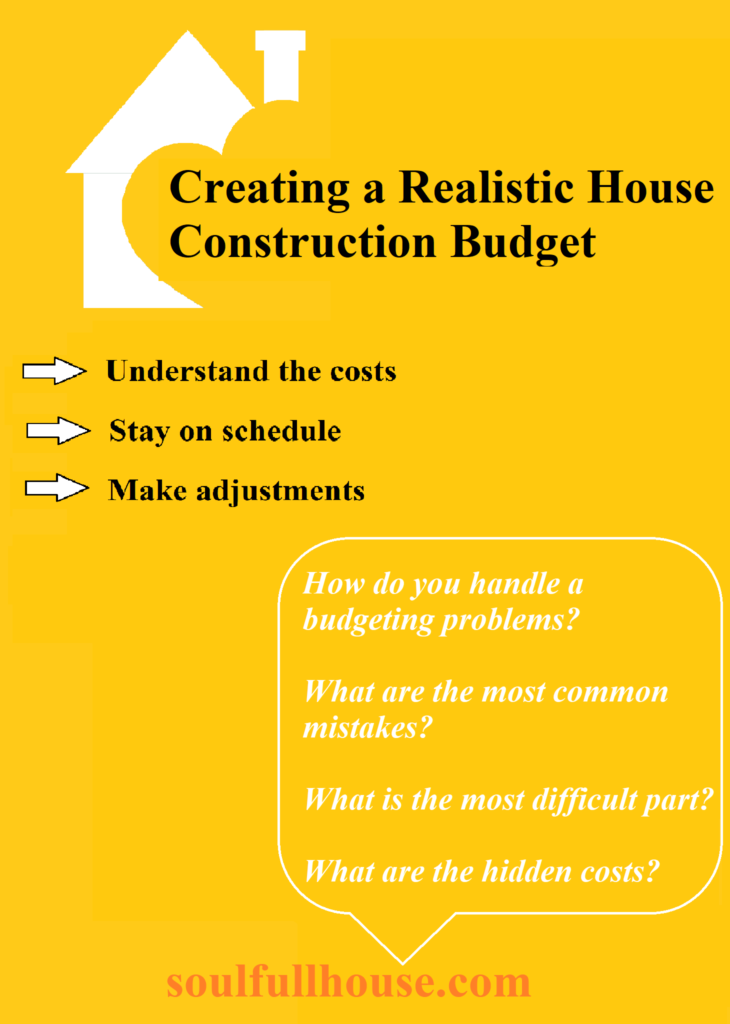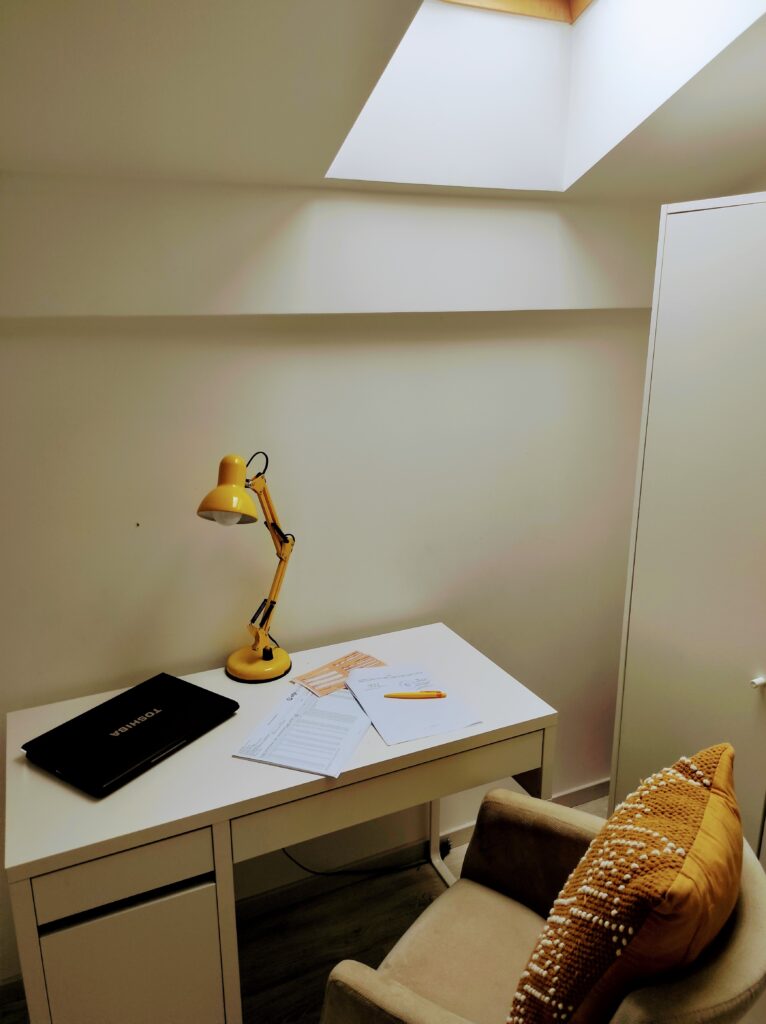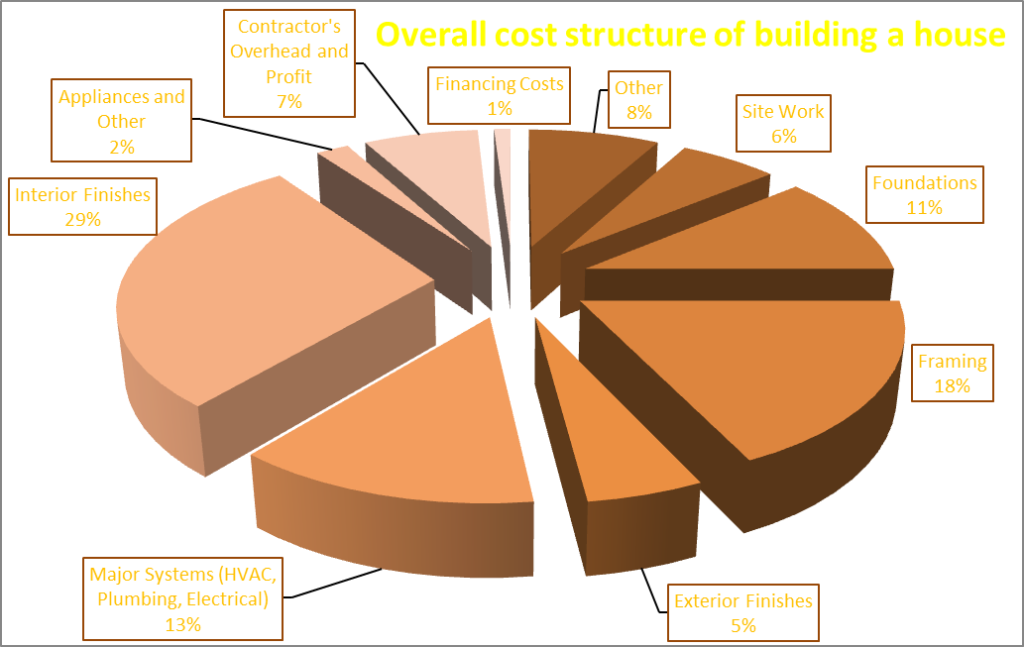Building a home is probably the biggest investments most people will make in their lifetime. It’s a significant commitment that requires careful planning and consideration, especially when it comes to staying on budget. This article aims to provide a comprehensive guide to creating a realistic house construction budget, to illustrate where and which issues are most common and how to avoid them.

How do you stay within a budget in a house construction project?
There are three things that should always be kept in mind in order to stay within the projected construction budget:
- Understand the costs involved in building a home! You will need to incur many types of expenses, such as construction costs, permit fees, and design fees. Post-construction costs, such as landscaping and home maintenance, must also be considered and contingency planning to account for unanticipated costs that may develop during the construction process.
- Stay on schedule! Delays during the construction process can be costly, both in terms of time and money. Stay on schedule by creating a realistic construction timeline, identify potential delays, and stay proactive in managing the construction process. It is important to communicate and collaborate with your building team to ensure that everyone is working together towards the same goal.
- Review your budget and making adjustments! Reviewing your budget throughout the construction process is critical to ensuring that you stay on track. In this chapter, we will discuss how to review your budget regularly, identify areas where you can make adjustments, and make changes as needed. We will also discuss the importance of staying flexible and being willing to make trade-offs to ensure that your overall budget remains realistic and achievable.
How do you handle a budgeting problem when constructing a house?
The primary method for tracking and managing project costs is to compare the degree of completion of construction works and budget execution in percentages per time period, preferably weekly and at a minimum monthly. This provides insight into the project’s performance in relation to the scope, timetable, and basic prices. It is a very useful tool for being proactive in spotting prospective issues that may have a negative influence on scope, time, or money later in the construction process. As a result, we assess what work was done (to what extent), how much it costs in comparison to the planned budget, and how long it took in comparison to the schedule baseline.

You, as a general contractor, can act accordingly to prevent overruns and achieve a higher probability of success by anticipating future project performance as well as projecting timetables and completion costs at any point during the project by interpreting this information. Because of the complexity, restrictions, uncertainty, and competing interests and priorities, project cost management is always difficult. Because of the complexities inherent in most works, we cannot practically expect to plan house construction and generate an accurate cost estimate.
Yet, in general, the more we work to plan and clearly describe the project’s core scope, the more effectively we can reach an accurate estimate.
What are the most common mistakes in budgeting?
Not writing your budget down. Budgeting is not a process that can be accomplished in your head, despite your best efforts. It is probable that you will overspend each month. If you haven’t written down your budget, even if you believe you understand your budget well, there will be expenses or other components of your budget that alter or are forgotten. Making a budget is a crucial part of accomplishing your financial goals. Creating a picture is the first step in building an effective budget, whether you use a budgeting template, an online tool, or even a napkin. When it’s written down, you’re more inclined to follow up.
Not tracking your spending. People have difficulty keeping track of their spending. When trying to stay to a budget, it is critical to be aware of and direct where your money is going. You can create financial objectives and wish lists, but your budget will be useless until you track where your money is going. Writing down absolutely everything what you spent each day into various construction categories is a great place to start. Whether it’s a minor purchase, like can of paint, or a significant expenditure, like a rooftop covering, write it down. The greatest method to acquire control of your budget and finances is to keep a close eye on your spending.
Not planning for emergency expenses. Even if you budget well for all of your ongoing construction works, not budgeting for emergency expenses might throw your budget for a loop. Without adequate planning for these unforeseen expenses, you may end yourself adding to your debt. Establish an emergency fund so that you have a safety net for unexpected expenses. These are some of the construction works that are most common to have unexpected expenses:
- land preparation
- waterproofing
- landscaping
- flooring
- accessorizing the bathroom
What is the most difficult part of budgeting for a house construction?
The most difficult task is setting spending priorities. To set spending priorities, it’s important to identify the essential elements of the project that must be completed first. These may include things like the foundation, framing, and roofing, which are critical to the overall structure and safety of the home. Once these essential elements are accounted for, the remaining budget can be allocated to other components of the project such as plumbing, electrical work, flooring, and finishes.
When setting spending priorities, it’s important to consider both the immediate needs of the project and the long-term goals for the home. For example, investing in high-quality insulation or energy-efficient windows may increase the upfront costs of the project, but can lead to significant savings on energy bills over time.

What are the hidden costs of building a house?
These are some of the costs that are most often not taken into account when designing a house and planning a budget:
- Modifications/Variations
- Temporary Site Requirements
- Road Closure Fees
- Permit fees
- Utility connections
- Upgrades and customizations
- Moving expenses
By accounting for these hidden costs and building in a contingency budget, you can help to ensure that your house construction project stays on track and within budget. It’s important to work closely with your contractor or architect to anticipate potential expenses and plan accordingly.
To conclude: As someone said, a plan is nothing, but planning is everything!
